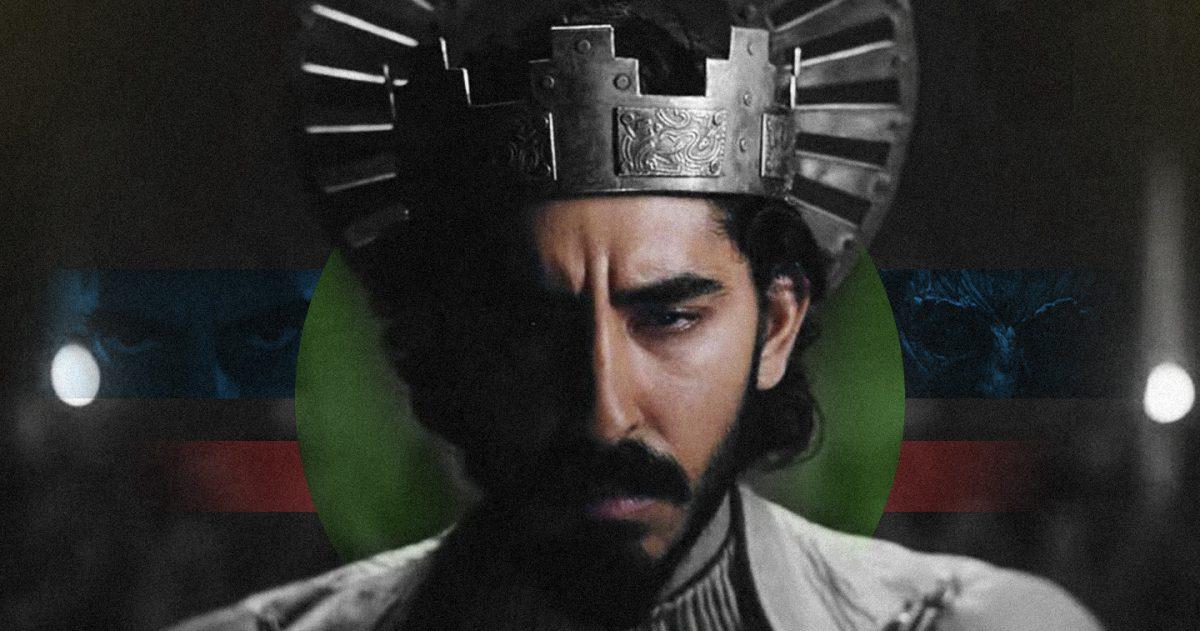MANILA, PHILIPPINES — The enduring myth of King Arthur and Camelot remains appealing to many even centuries after it was first told. Since medieval times, various elements of the Arthurian legend have been retold and adapted and even modern media has seen those elements brought to life in both the big and small screen. One of those offshoots is the 14th-century poem by an unknown writer called Sir Gawain and the Green Knight. That is the tale that the latest film from director David Lowery, simply titled The Green Knight, is based on.
A knight of the Round Table, Gawain (Dev Patel) awakes on Christmas morning in a brothel by his lover, the commoner Essel (Alicia Vikander). Scolded by his mother, the witch Morgan le Fay (Sarita Choudhury) for his tardiness, Gawain makes his way to Camelot where his uncle, King Arthur (Sean Harris), invites him to sit by his side. As the king begins to give thanks for their Christmas gathering, Morgan and her sisters are performing a pagan ritual, casting a strange spell.
Upon finishing their spell, a mysterious Green Knight (Ralph Ineson) seemingly made of wood and leaves arrives on horseback to challenge Arthur’s court. Any knight who lands a blow on the Green Knight will win his large green axe. That same knight must travel to the Green Chapel in one year, however, and receive a similar blow in return. Gawain accepts the challenge and promptly beheads the knight.
Standing and holding his severed head, the Green Knight reminds Gawain of the terms of the bargain before riding off. In the year that follows, Gawain’s reputation grows beyond Camelot as his tale of bravery is retold. As the following Christmas approaches, Morgan gives him a green girdle that will supposedly protect Gawain from harm as long as he wears it.
The time finally comes for Gawain to live up to his bargain with the Green Knight and he departs for the Green Chapel on horseback. Along the way, his courage, intelligence, and integrity are tested before Gawain once again comes face-to-face with the knight.
One of the first things the audience will notice with The Green Knight is that it isn’t a Caucasian stepping into the armor of Sir Gawain. Dev Patel, 13 years after first getting noticed in Slumdog Millionaire, almost immediately makes you forget his race and instead focus just on his acting. Casting him and Choudhury in roles usually given to white actors doesn’t feel forced, however, because of just how good they both are.
Although Morgan le Fay has always been an antagonist against King Arthur, Lowery only implies their adversarial relationship in The Green Knight as the scene of the knight’s summoning was done in montage form, interspersed with Arthur’s speech. That subtlety, which also implies that Gawain doesn’t know his mother’s part in his encounter, actually makes the audience think, particularly when Gawain and the Green Knight finally have their climactic meeting.
The production values, cinematography by Andrew Droz Palermo, costume design, and overall visuals of The Green Knight are stunning. Lowery’s vision for this fantasy can be breathtaking at times, and not just in the outdoor scenes. The imagery of Arthur and Guinevere (Kate Dickie) with their unique crowns make them look like saints or religious figures from the era, giving them an almost otherworldly look.
As Gawain goes to meet his fate, his encounters take on dreamlike qualities that continue to test his worthiness of being a knight. From his meeting a scavenger on a battlefield of slain warriors, to an abandoned cottage with a young woman (Erin Kellyman) who wants Gawain to retrieve her decapitated head from a nearby spring, to a castle inhabited by a Lord (Joel Edgerton), a Lady (also Vikander), and a blindfolded old woman who offer other temptations. These tests don’t overtly show the audience that they are dream sequences or fantasies and instead leave one wondering the reason why they were placed before Gawain and the Green Chapel.
This was a risky film for any filmmaker to undertake since, as previously mentioned, so many Arthurian adaptations have been made. However, aside from the late Sean Connery starring as the Green Knight in 1984’s largely farcical Sword of the Valiant: The Legend of Sir Gawain and the Green Knight, there have only been a couple of adaptations of the story for television.
Patel shows the uncertainty and often foolishness that comes with youth trying to prove themselves worthy of a noble title even as he is tempted by things including Vikander’s presence as two characters. Harris, often cast as villains or old mentors to kings, offers a unique take on King Arthur, shaky yet grateful for his achievements, and also acutely aware that he is closer to death than he is to extending his rule. Though Ineson’s Green Knight is covered in prosthetics and makeup, he doesn’t come across as comedic or boastful. Instead, he is mystical and creepy, making Gawain even more unsure as his looming date with destiny approaches.
Given almost a clean slate (and a $15 million budget) to work with, Lowery presents a most unique take on the myth but by no means is that a bad thing. Although advances in filmmaking and special effects could have easily allowed the director to go the CGI route, he instead used more traditional movie tricks like matte paintings, makeup, and costumes to bring this story to life.










